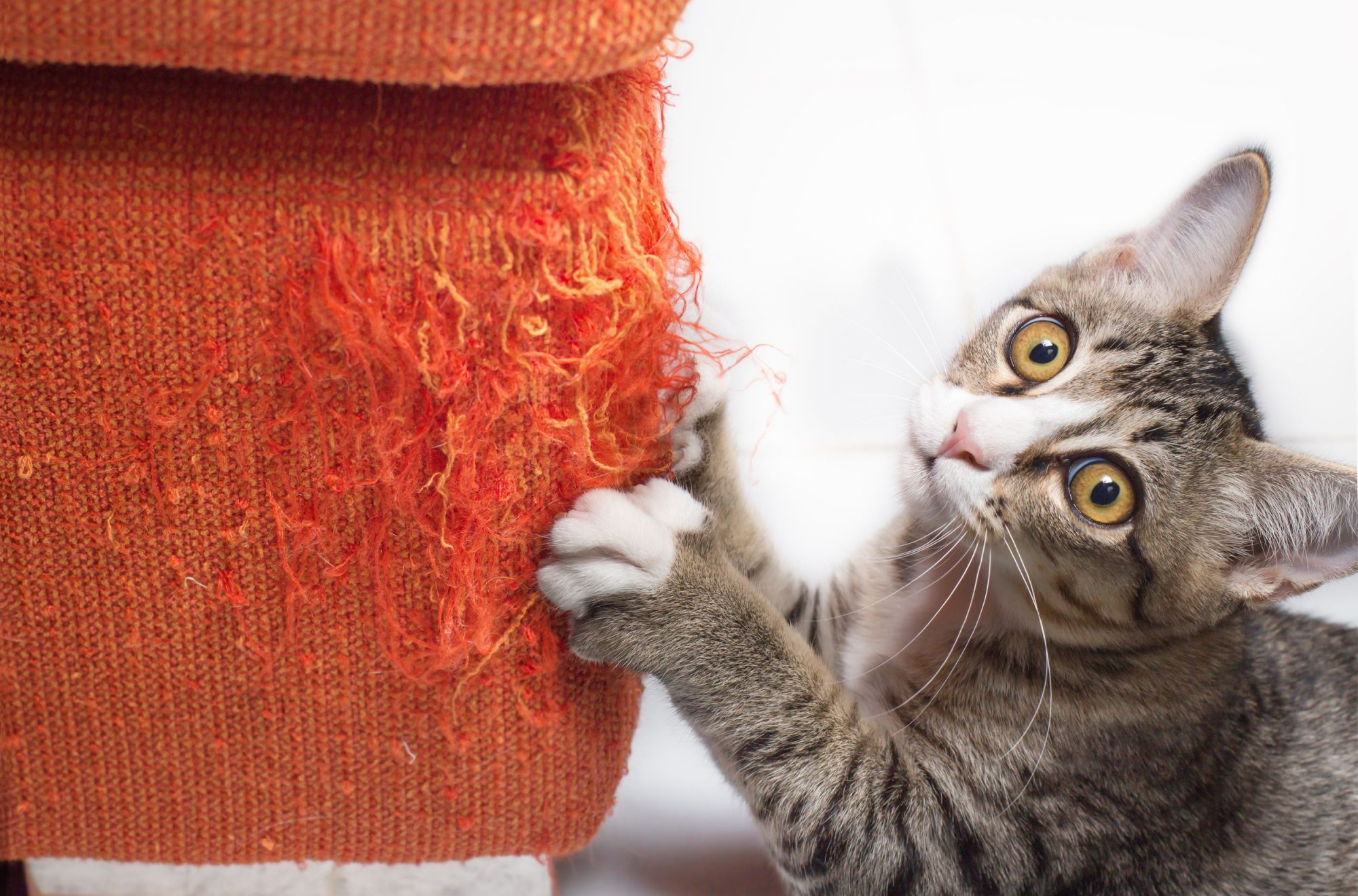Safe Alternatives to Cat Declawing

Dozens of countries around the world have banned cat declawing, but only the American states of New York and Maryland have legally outlawed this controversial surgical procedure. That doesn’t mean there aren’t numerous national organizations working to raise awareness of the painful effect this practice has on our feline companions. While once widely regarded as a safe and humane procedure, few feline practitioners recommend cat declawing today.
For cat owners struggling to cope with destructive scratching behaviors, there are incredibly effective alternatives to the surgical removal of their cat’s claws.
Serious Disadvantages
We know how aggressive some cats can be. We’ve either experienced shredded furniture first hand, or seen the effects that powerful feline claws can have on others. However, there are many risks to declawing, including the long-term pain and suffering that occurs after the procedure.
Considered the last “knuckle” of a cat’s toe, the claw is completely removed along with the nail bed. The procedure may be similar to the amputation of a person’s fingertips. Severing the connected bones, tendons, and nerves can create traumatic pain.
Once thought to be an effective strategy against unruly scratching behaviors of furniture, people, and other animals, cat declawing is now considered an antiquated and inhumane procedure.
Kitty Loves to Scratch
A primary feline behavior is scratching. Not only necessary to sharpen their claws to increase their odds of survival (for both hunting and self-defense), scratching relieves tension in the legs, feet, and back. The action also releases the outer sheath of the claw that dies off as the claw grows. Perhaps most importantly, scratching is used to mark feline territory by depositing pheromones from the feet and showing destructive prowess.
Fortunately, there are effective strategies that maximize their physical and mental health, while redirecting scratching to certain surfaces. Train your cat to scratch on designated items and reward them when they scratch in the right places.
Start the List
Provide your cat with a proper, sturdy scratching post close to the area they’ve been marking. Vertical and horizontal scratching posts with various textures and designs give plenty of appealing options. Sprinkle catnip on these items to attract them. Reward them when they use their scratching areas. Try to ignore the unwanted behaviors, such as when they scratch your couch or rug. You can affix unattractive or unappealing surfaces to spots they like to scratch, like tin foil or sticky double-sided tape. Certain non-toxic citrus sprays also curtail scratching.
Keep their nails trim and tidy. The earlier they learn to accept this type of grooming, the better. Offer healthy treats and praise when they allow you to trim their claws. Invest in a good nail trimmer that helps you make accurate cuts (always have your cat’s first-aid kit handy just in case). If they resist, we can help you trim their claws or refer you to a trained cat groomer.
Some owners find success with vinyl nail caps that are placed on each individual claw. As the nails grow, the caps will have to be replaced, and may be abandoned over time as your cat adapts to your rules and expectations.
Beyond Cat Declawing
If you have questions or concerns about cat declawing, please don’t hesitate to call us at (916) 939-1705. Our veterinarians at MarketPlace Veterinary Hospital are here to help your cat thrive.

